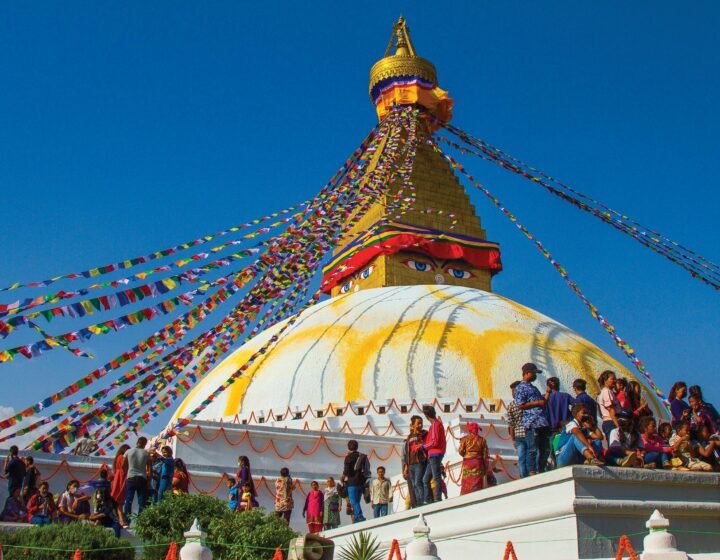- Details
Detailed itinerary
Itinerary- Tour Includes/Excludes
- Useful Info
- FAQ

Trip overview
Shamanism tours in Nepal are a relatively new concept for adventures. The Nepal Shamanism tour has been practiced for thousands of years and has been proven to be a healing strategy. Nepal has a rich natural and cultural landscape, with over 115 ethnic groups, most of which have their own shamans. Shamanism has been practiced in Nepal for a long time, coexisting with Hinduism and Buddhism, making Nepal one of the most popular destinations for Shamanism tours in the world. Shamans are referred to as Dhami and Jhankri, while each ethnic group has its own term based on dialect. Nepal shamanism tours present guests with very unique life-changing experiences.
The Nepal Shamanism trip is becoming increasingly popular among spiritual travelers and trekkers visiting the Himalayas. A minimum of one week is necessary for a Nepal shamanism package vacation but can prolong spiritual journeys up to three weeks, depending on the guests’ wishes and holiday frame. The Travel bureau Team will transport you to the Himalayas for a shamanism trip that includes Langtang Sherpa hamlet, Timal Kavre, Birta Deurali, and other destinations according to your vacation schedule. Throughout the year, Himalaya Journey Trekking & Expedition organizes Nepal shamanism tours.
Highlight:
- The traditional concept of healing methods.
- Shamanism is an ancient practice in which you can see shamans execute numerous ceremonies.
- Tribal cultures
- Witness to the viable healing system.
Itinerary
Day 1: Arrival in KathmanduArrival to Kathmandu for Nepal Shamanism, our agent will pick you from airport and he/she will give you tour briefing with official arrangements. Kathmandu overnight
Bodhnath Stupa, one of the world's largest Buddhist shrines, where we can see Buddhist monks praying in the monasteries surrounding the stupa; and Pashupatinath, the country's most famous Hindu temple, lies on the banks of the Bagmati River. Sadhus (Hindu holy men) meditate here, pilgrims bathing, and funeral pyres burning on the ghats on occasion. You will love visiting several Hindu temples, including Goddes Kumari, and learning about the legends of the Kathmandu Valley. Kathmandu overnight
We will start our journey, where the program is organized based on guests' vacation schedules ranging from 4 days to one week).
Bhaktapur, where you will appreciate varied stunning Himalayan views, old architecture, 55 windows, Pottry Farm, King Curd, and old-style basic residences. Etc Patan is Nepal's temple city, with various temples such as the Mahabudhha and the Golden Temple. Monkey Temple (Swyambhunath): A Buddhist pagoda from which you can see the entire Kathmandu valley, including the Himalayas. A goodbye dinner in a Nepalese restaurant in the evening, followed by an overnight stay in a hotel in Kathmandu.
After breakfast, relax or go shopping with your own activities before our representative drops you off at Kathmandu International Airport for your next flight. If you have time in Nepal, we will arrange tours such as the Chitwan jungle safari, Lumbini Pokhara, Nagarkot tour, rafting, and so on.
Included
- The service includes airport pickup and hotel transportation.
- Three nights in Kathmandu on a BB basis (3-star category hotel) on twin sharing, as specified in the schedule.
- A tour guide with a government license who is knowledgeable, helpful, and friendly.
- Tour of Kathmandu valley with a guide according to the itinerary
- Tour of the Kathmandu Valley by private vehicle, as specified in the itinerary
- Trip to Nepal Shamanism, as specified in the agenda.
- The entire itinerary's program
- Transportation by land
- Flight ticket insurance for both directions (guided tour and porters)
- Taxes and fees for guides and porters
- Government tax and a service charge for the office.
- Drop-off at the airport
Not Included
- Lunch and dinner throughout your stay in Kathmandu.
- International airline ticket.
- Visa to Nepal
- Disembarkation Airport Tax in Nepal-approx. US$ 24. Every piece of equipment High-risk medical insurance
- Entrance fees while on a sightseeing tour in the Kathmandu valley
- Alcoholic beverages and telephone calls.
- Any beverage that is not mentioned in the package.
- If an emergency rescue evacuation is needed,
- Expenses of a strictly personal nature
- Tipping/Tipping is Expected.
Useful Info
- People often disregard Nepal's Shamanistic past as a fascinating cultural mystery.
- Each Indigenous Tribal Clan in Nepal has its own Shaman. Magars,, Khas, Newars, Gurungs, Tamangs, Limbu,s and Thamis are among these communities. Don’t get confused with the practice.
- The healing process, also known as “Saya Chongma/ Saya Pukma” is termed “Sir Uthaune” in Nepal which may literally mean “Raising the Head” but its essence runs deeper than that. “Saya” as a word actually means “Life Soul”.
FAQs
-
What exactly does shamanism entail?
Many ethnic groups in the eastern and western hills of Nepal practice shamanism as their traditional religion. Shamanic practices have had a significant impact on Buddhism, Hinduism, and other religions. Nepali shamans, also known as jhankris or dhamis, wield a double-sided drum and dress in a headpiece made of peacock feathers.
-
Where in Nepal is shamanism practiced?
In Nepalese society, the shaman's position continues to be crucial. Members of society's families hold the Anima to be real. Particularly in the hilly region, which includes Dhading, Nuwakot, Dolakha, Jajarkot, Kaski, and the Kathmandu district, shamanism is practiced.
-
Who is the shamanistic god?
Shamans paid reverence to a wide variety of gods by making sacrifices to them, especially in the Oroqen tradition. The sun god, moon god, gods of the stars, thunder god, wind god, water deities, river god, fire god, mountain spirit, and others were among these revered beings.








